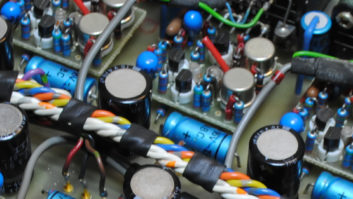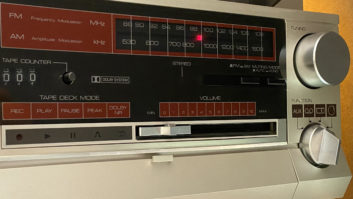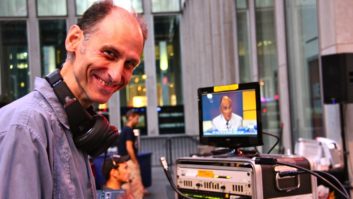
I caught a bug this past weekend, and it followed me around to a couple of gigs. Fortunately, it was a technical bug and not the virus type—very annoying, but, of course, the gigs proceeded.
One of the shows had a mystery without resolution.
As always, I checked with the systems tech before loading my scene into the digital desk. To be safe, we double- and triple-saved the scene he used to fire up the system earlier that day. Sure enough, when we loaded my scene, it blew out the output patch assignments, leaving us with one of two choices: manually re-create the output patch, or reload his scene, safe the outputs and then reload my scene.
Mix Live Blog: Finding Fire in a Bottle
Take 2: We reloaded his scene, safed the output patch (or so we thought), then reloaded my scene. Same result: the output assignments were erased. Grrrr. We agreed that it’d be easier to manually re-create the output patch since it was a fairly simple L/R/Subwoofer arrangement.
Take 3: We re-reloaded his scene, made note of the output assignments, then re-reloaded mine.
Take 4: We changed the outputs in my scene to match the system, and we had audio—except that it was about 10 to 12 dB lower in level than what we heard using his scene, and it was right-heavy (and not just because we were closer to the right side of the P.A. system).
We searched and searched—high, mid and low, all around the town—but were never able to find the “lost gain.” As far as we could tell, there was no attenuation or insertion loss from an EQ on the output(s), no compression, no stray DCA assignments, and no attenuation in the system processor that we could find. The P.A. simply sounded lower in volume than it should.
Soundcheck time was approaching, so we went for…
Take 5: I’d start with his scene, duplicate it, then rewrite it to my show. Ugh. It’s been a long time since I had to do this from scratch, and quite frankly, I forgot what a pain in the neck it is. The gain structure seemed better, but I swear the P.A. was louder when I heard him test it before we started changing scenes. Realizing that we had to move along, we raised the left input to the drive processor until the P.A. sounded balanced. We never found the problem.
The other show also had some bugs, but at least we were able to identify the source of the main problem. After sorting out some network issues (e.g., the FOH console wouldn’t see the stage box), we found that the system processor was stuck in a state of “protective mute.” We tried restarting, rebooting, etc., but still the processor remained in protective mute.
The big question: “How do we get this thing out of protective mute mode?” No one knew.
There was not a single person on staff for our show that was familiar with the system and knew how to use the processor, or knew if there was an access code to override the protective state.
I was fairly certain that if we performed a factory-reset of the processor (we were able to find that information on the internet), then loaded the preset file from the PC that was running the companion software, the processor would unlock and we could reload the file. But it’s not my system. And that was the response I received from the tech staff: “It’s not my system.” “I don’t know how to do that.” “So-and-so knows the system better than I do, but they’re in the Land Of Oz doing a gig for the Wicked Witch of the East.” “My dog ate my homework.”
One of my techs dove in to look at the house patching, and it turned out that the uncooperative processor was being used only to EQ the P.A.—not to distribute or time-align it. Lucky for us, the inputs to the processor were four analog XLRs, and the outputs were also four analog XLRs that fed the “real” system processor 1:1. The workaround was easy: patch those XLR lines together to bypass the locked processor.
I lost the fancy-pants EQ, but I really didn’t give a bug’s behind because by this point, it was late in the afternoon, and, oh yeah, we have a show to do. I’ll find another way to tune the P.A.
I don’t understand how the theater could be staffed for a show without a single person—or even access to a single person—who knew the system well enough to solve this problem. It was absolutely bush league. In spite of this, the show went off, and I didn’t hear any patrons complain about the fact that I didn’t have a fancy-pants EQ in the audio path.
Good grief.






